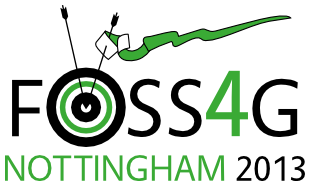W4: Impact Modelling with OpenStreetMap and InaSAFE
Lead Presenter: Kate Chapman (Humanitarian OpenStreetMap Team)
with Kristen Van Putten
Sir Clive Granger Building: B29 B - Sept. 17, 2013, 9:30 a.m. to Sept. 17, 2013, 6 p.m.
To prepare contingency plans for a city at risk of severe flooding, emergency managers need to answer the following questions: * Which areas are most likely to be affected? * How many people will need to be evacuated and sheltered? * Which schools will be closed? * Which hospitals can still take patients? An open source solution to this geospatial problem is the combination of OpenStreetMap, QuantumGIS and InaSAFE.
To effectively prepare for future floods, earthquakes or tsunami it must be first understood what are the likely impacts to the population and structure. For example, to prepare contingency plans for a city at risk of severe flooding, emergency managers need to answer the following questions: * Which areas are most likely to be affected? * How many people will need to be evacuated and sheltered? * Which schools will be closed? * Which hospitals can still take patients? An open source solution to this geospatial problem is the combination of OpenStreetMap, QuantumGIS and InaSAFE. In this combination of tools OpenStreetMap helps fill in missing data gaps, QuantumGIS provides the baseline analytics, and InaSAFE produces realistic natural hazard impact scenarios. The results can then in turn be utilized for better planning, preparedness and response activities. It is a simple but rigorous way to combine data from scientists, local governments and communities to provide insights into the likely impacts of future disaster events. InaSAFE is focused on examining, in detail, the impacts a single hazard event would have on specific sectors. Potential impacts are calculated using functions that relate the magnitude of the hazard (e.g. water depth, ground shaking, ash load) to impact for specific sectors. In the above example, a threshold flood water depth from a hydrodynamic model result may be used to estimate how many people will need to be evacuated for a particular flood scenario. This information can then be used by disaster management agencies to prepare sufficient emergency supplies (food, water, family kits etc) before the disaster occurs. In turn we can also estimate how many schools (gathered through OpenStreetMap) will be in water depth greater than 1 meter. Workshop Aims: * Understand what impact modelling is and the open source tool stack that can help in disaster preparedness * Know what types of data go into impact models and where to obtain that information * How to collect data in OpenStreetMap for disaster planning * Understand the concept and components of InaSAFE * Run multiple hazard impact analyses Schedule 09:00 - 09:30 Overview of Scenario Development/Impact Modelling 09:30 - 10:00 Introduction to the Tool Stack 10:00 - 10:30 Preparation for Field Data Collection (Intro to Field Papers) 10:30 - 11:30 Data collection 11:30 - 12:00 Editing of Data Collected 12:00 - 13:00 Lunch (continued editing of data by those that would like) 13:00 - 13:30 Overview of InaSAFE (Concept of InaSAFE, inputs, impact functions and results) 13:30 - 13:45 Download InaSAFE Plugin 13:45 - 14:30 Run InaSAFE, (Tsunami in Padang, Earthquake in Yogyakarta, Volcano in Ijen) 14:30 - 15:00 Data needed for InaSAFE (Explain keywords and spatial data) 15:00 - 15:30 Break 15:30 - 16:00 Download of Data from Morning Editing (HOT-export Tool) 16:00 - 17:00 InaSAFE practical (Using Keywords, trying different combinations)
